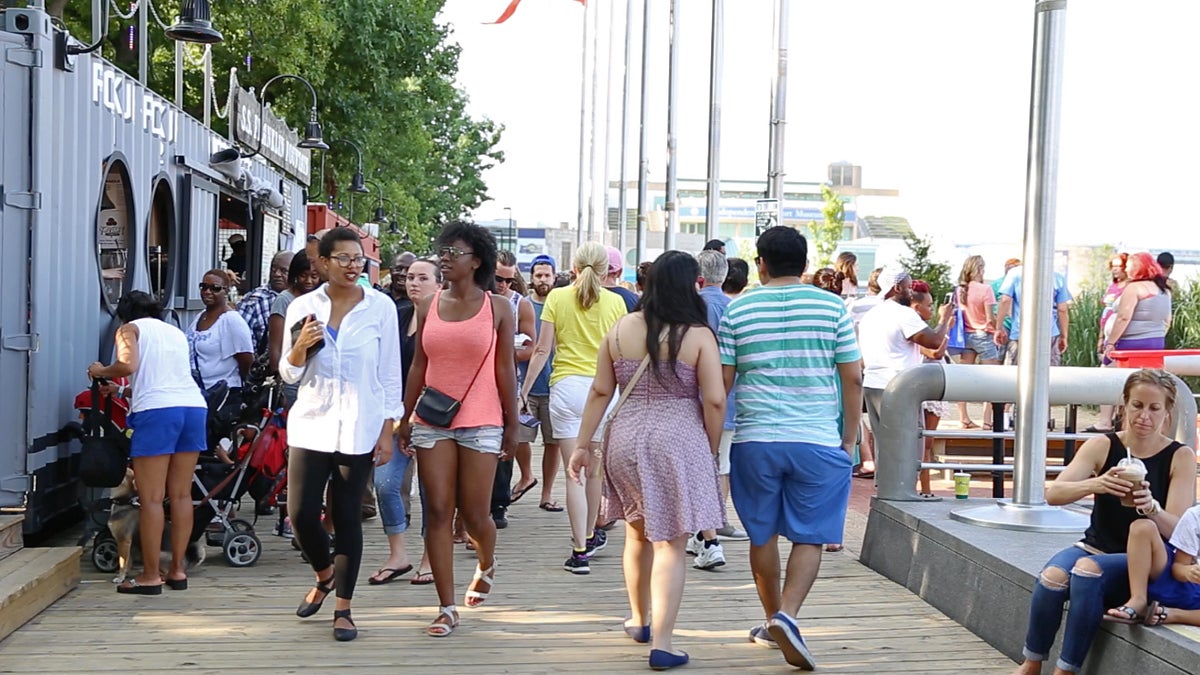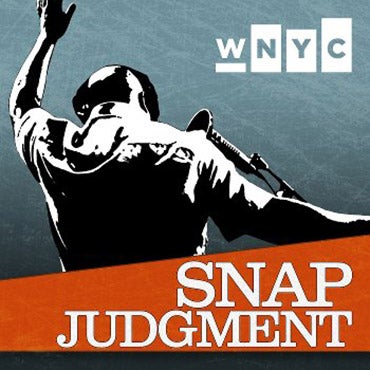Popping up in a vacant lot near you: Community engagement and neighborhood revitalization

People come from all over the city to enjoy Philadelphia's Spruce Harbor Park
These low-cost, temporary opportunities for community engagement are gaining in popularity.
In some Pennsylvania cities, it seems like “pop-ups,” where vacant land is temporarily converted into community space, are around every corner. In Pittsburgh, you can play life-size chess and mega Jenga in an unused office park, or sit in a tiny dumpster park. A lot underneath Philadelphia’s abandoned Reading Viaduct has found new life as a summer beer garden.
You’d be hard pressed to find a city in the commonwealth that hasn’t experimented with at least pocket parks, large enough for one or two passerby. The short-term, low-cost aspect of these parks allows cities to give different groups a space to try out their ideas without much risk.
Vacant space, reborn
For cities struggling with population decline, one side effect is a large number of blighted homes and vacant properties. In Camden, N.J., city leaders spent years trying to gather the $8 million needed to tear down 600 blighted houses that neighbors had been complaining about for years.
When they were finally able to bring those properties down, Mayor Dana Redd said they were left with a lot of vacant lots — and an opportunity they never expected. Redd was speaking at the Revitalizing Our Communities conference put on by the Federal Reserve Bank of Philadelphia last week.
“Residents want to see the pop-up parks,” Redd said. “We’re also advancing the Connect the Lots program which has had yoga happen throughout many of our open spaces.” Connect the Lots allows artistic, cultural and recreational projects to develop in unused space, to encourage safe and lively gathering places for residents.
She said these efforts are working, getting residents out into their communities and investing in beautifying the vacant spaces. Rather than crumbling houses posing a fire hazard, the city has neighborhood gathering spots and outdoor yoga studios.
Redd was open to seeing those neighborhood spaces revitalize from a grassroots level. But not every city is welcoming to pop-up parks, shops, and art exhibits right off the bat.
“A lot of city officials are starting to see the value, especially now that it’s a national phenomenom,” said Terry Schwarz, director of the Cleveland Urban Design Collaborative at Kent State University. They run Pop-up City, a group that installs pop-ups around Cleveland and Northeast Ohio.
“If you slog through the process once, [the city] knows that they can do it. There is an example and anyone who comes after can follow that path you slogged through.”
Short-term exhibit, long-term benefits
Schwarz’s group has done a number of short-term, high-impact projects. They created a temporary dog park on the location of a future park, to get the neighborhood excited about the new park. They staged “Leap Night,” a late-February winter wonderland on the grounds of a stalled downtown development. And they’ve turned a number of unused bridges into event spaces. Imagine getting married right over the freeway!
But Schwarz often wrestles with the idea of pop-up community engagement. She admits that it sometimes feels like “a pebble in the ocean” of the issues that cities like Cleveland face. When your city is depopulating quickly or facing a municipal pension crisis, what’s the point of a really cool, really brief art installment?
“It’s fun to do projects that are exciting and photograph nicely but if we aren’t affecting some level of change in urban neighborhoods, then I’m not sure we’re accomplishing what we set out to do,” said Schwarz, who was on the “From Pop-Ups to Permanent: Creative Reuse of Vacant Land in Lower-Income Neighborhoods” panel at the conference.
Her group has focused on affecting neighborhood change by investing heavily in the community engagement side of things. They hold design workshops for teenagers, teaching them the skills needed to be part of the next big project. They work to make events accessible and welcoming for Cleveland’s homeless population, and make sure the elderly neighbors have a role to play as well.
Schwarz says, “right from the beginning of the process, think about the audience you want to attract, and then think about how they can be engaged in the process themselves.”
Low cost interventions
Schwarz also cautions anyone thinking about making a pop-up in their own city. “Having done many of these projects, it’s not always that cheap, and it’s not always that quick,” said Schwarz.
But the bar is much lower than trying to get the city to install a new permanent park in your neighborhood. Eric Ho, the founder of Miles.City, said this is what attracted him to the idea of pop-ups.
Miles.City is a New York-based organization that helps connect landlords with vacant storefronts to groups interested in short-term leases. For example, an online cookie company that wants to open a holiday store for the month of December, or a fledgling clothing brand deciding whether to invest in a long-term lease.
“We always say these are things that are ‘too small to fail,'” said Ho. “If you spend $1000 on something and you lose $1000, okay. Maybe you learned something. Hopefully, you learned something. But that’s much better than taking a huge risk on something that might fail.”
That’s what Philadelphia did when re-imagining the city’s waterfront. Rather than investing in a pricey attraction like a casino, or a stadium, the city looked to work with what they already had going. The Delaware River Waterfront Corporation spent $810,000 to create Spruce Harbor Park, a waterfront attraction featuring food, drinks, hammocks and ping-pong.
The park is free, and seems to draw visitors from all parts of the city. The low-cost aspect allows the group to modify the park as needed.
Jeffrey Barg is an urban planner at the Pennsylvania Horticultural Society, which has created other pop-up gardens across the city. He says the immense success and popularity of these short-term installations has had long-reaching effects on the city.
“For the first couple of pop-ups, those were designed to pave the way for what came next,” said Barg. “No one expected, period, that those would become permanent green spaces.”
From pop-up to permanent, those “pebble in the ocean” projects are starting to pile up.
WHYY is your source for fact-based, in-depth journalism and information. As a nonprofit organization, we rely on financial support from readers like you. Please give today.


